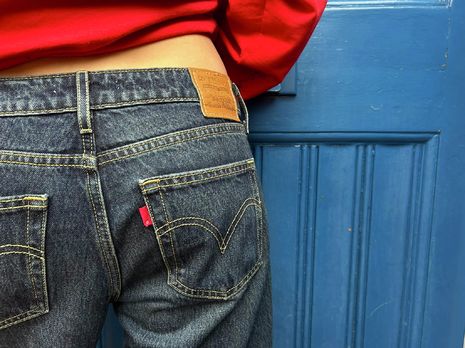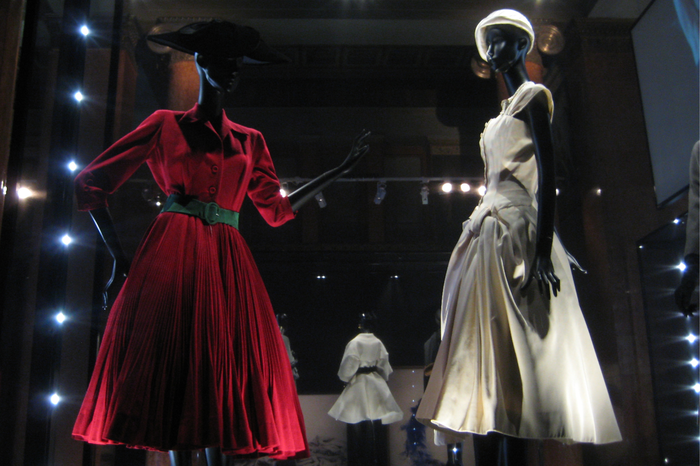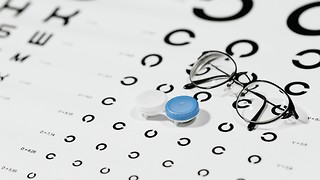Ripping the seams of an American emblem
Gabriella Sheward dissects the history and legacy of jeans and its current political force

Thirteen year old skater kids outside McDonalds; the local parents at the chippy; the business-casual chic of millennial office workers: jeans are an emblem of a collective identity of the Western frontier. Jeans transcend fashion, time, and demographic. Everyone knows jeans, everyone wears jeans.
August 2025 – I’m sat scrolling, and I see Sydney Sweeney’s blonde hair and blue eyes relaying the slogan “Sydney Sweeney has good jeans”. The current US political climate means we were shocked, but not surprised, at American Eagle using allusions to institutional racism to go ‘viral’. If jeans, right now, target young blonde-haired, blue-eyed teens, what are the historical patterns of jeans as a tool of individual and shared identity and power?
“Paradoxically, self-expression actually culminated in a singular uniform: blue jeans”
From the mid-20th century onwards, youth-oriented popular magazines and TV shows shared visual content amongst the new generation in a way like never before. Individuality and self-expression grew as representations of material culture and aesthetics bombarded advertisements. But, this gaining of individuality is daunting; exploring our teens, we often beg to be accepted by those around us. So, paradoxically, self-expression actually culminated in a singular uniform: blue jeans.
Out of the distortion of post-WW2 thought, the ‘teenager’ emerged, blue jeans acting as a staple to distinguish the new, dangerous, loud youth movements from their elders. Marlon Brando and James Dean’s infamous t-shirt and blue jeans pairing roots mid-century jeans in an air of defiance. Bikers, punks, etc; their jeans embody American cultural wars, a ‘f*ck you’ to the past.
Jeans are contradictory in their attractiveness to the eye. While saying ‘f*ck you,’ they also say ‘f*ck me’. While the colour blue is familiar – the sea, the sky – it remains the most mysterious and elusive, unreachable of colours. It is the colour of the miraculous and transcendent Virgin, and the name of the ‘blue-blooded’ exclusive aristocracy. The last colour to be recognised by the human eye, we are still figuring out what ‘blue’ is and what it means. Denim jeans therefore capture this subconscious attraction to deciphering the enigma. In construction, blue jeans are made of a thick and protective denim, unrevealing – yet sultry. Originating as men’s workwear, the unchanged pattern of the trouser was rigid but suggestive as a front, buttoned panel was added to reveal the groin rather than conceal it. Now with a button or zip fastening at the front of the trouser, the basic juxtaposition of heavy protection yet easy revelation persists.
“Denim jeans therefore capture this subconscious attraction to deciphering the enigma”
Cultural icon Marlon Brando’s various roles through the 1950s saw jeans getting tighter and tighter, polarising the difference between old and new generations. While his devious characters led to jeans having a bad rap amongst parents, youth groups desired those associations with rebellion; the sculptural construction of the jean is therefore laden with the construction of the consumer’s mind.
Jeans have long existed as evidence of class structures. Sydney Sweeney’s campaign is an example of this, clearly targeting young, white, middle-class women. The roots of jeans, however, come from the straight leg trousers of the European working class, then shifting to a uniform of protection for late 19th century prisoners and sharecroppers. While many mid-century Black Americans wanted to part with the visual reminder of oppression, the Black women of the SNCC (Student Nonviolent Coordinating Committee) adopted blue jeans, denim jackets and natural hair as a new ’skin.’ Black culture could be reclaimed without conforming to the aesthetic standards of the white middle class, as well as blurring prescriptions of gender. However, moving into the 1960s, American media focused on the construction of the white ‘teenager’, removing the radicalised decision-making behind denim.
Moving from the 1960s to the present day, Sweeney’s campaign replicates the pattern where an item of working class roots is reshuffled into a middle-class signal of exclusivity. Yet, while pasted over our feed in a frenzy, American Eagle’s new slogan cannot undercut the genesis of jeans as a tool of community power.
 News / SU reluctantly registers controversial women’s soc18 December 2025
News / SU reluctantly registers controversial women’s soc18 December 2025 News / CUP announces funding scheme for under-represented academics19 December 2025
News / CUP announces funding scheme for under-represented academics19 December 2025 Features / Should I stay or should I go? Cambridge students and alumni reflect on how their memories stay with them15 December 2025
Features / Should I stay or should I go? Cambridge students and alumni reflect on how their memories stay with them15 December 2025 Fashion / The art of the formal outfit 18 December 2025
Fashion / The art of the formal outfit 18 December 2025 News / Dons warn PM about Vet School closure16 December 2025
News / Dons warn PM about Vet School closure16 December 2025









